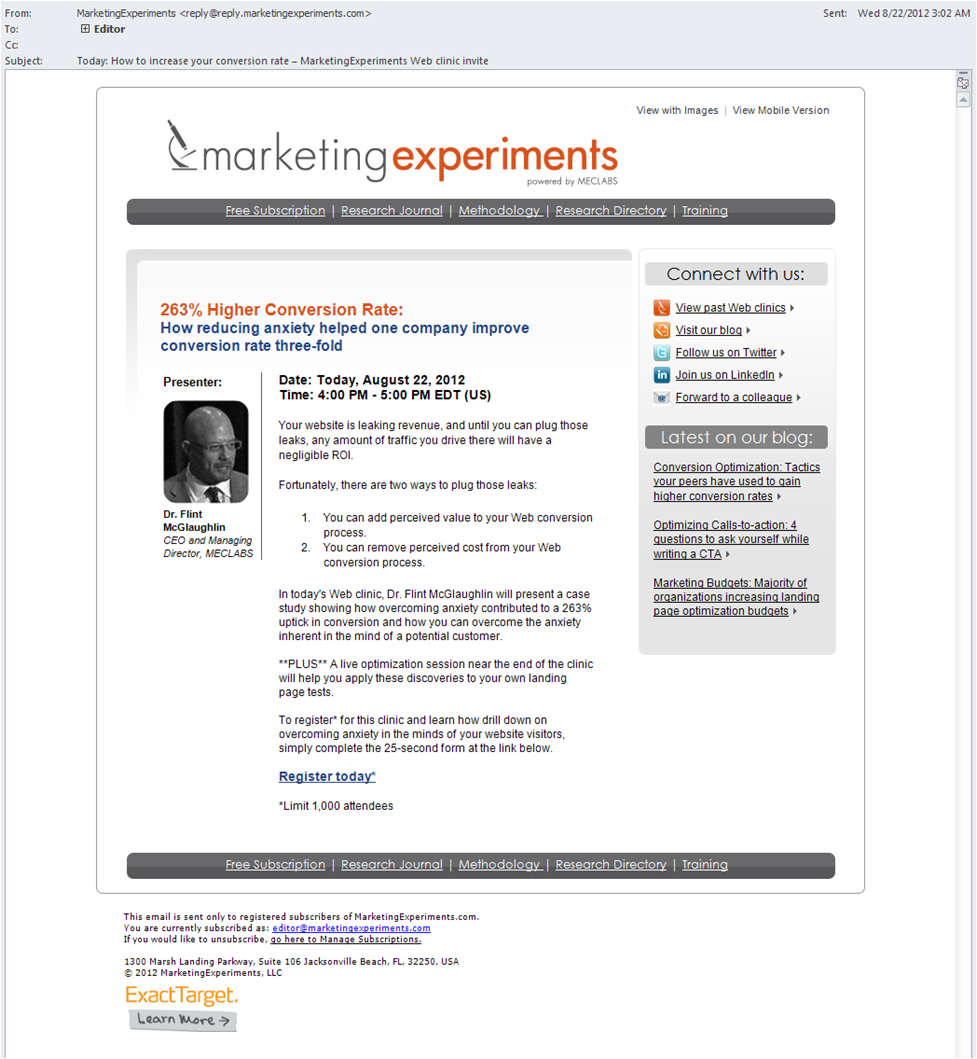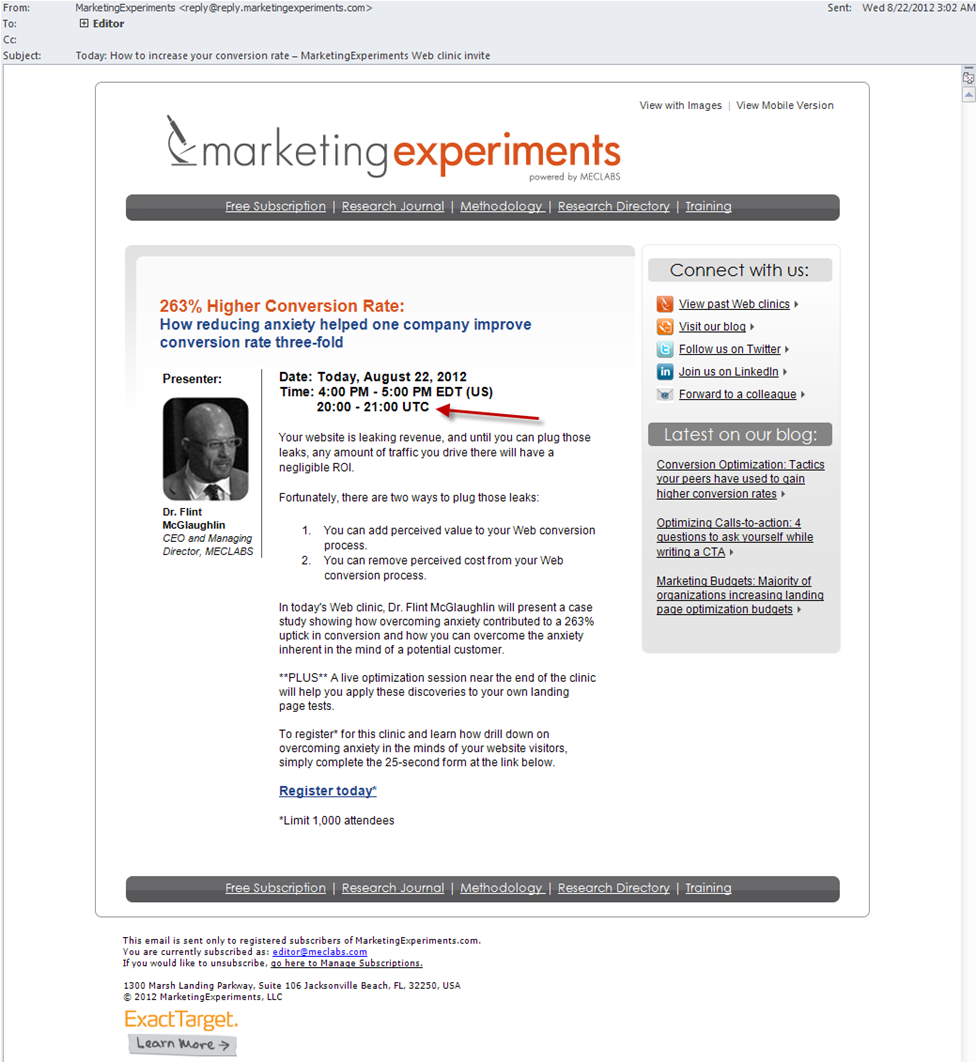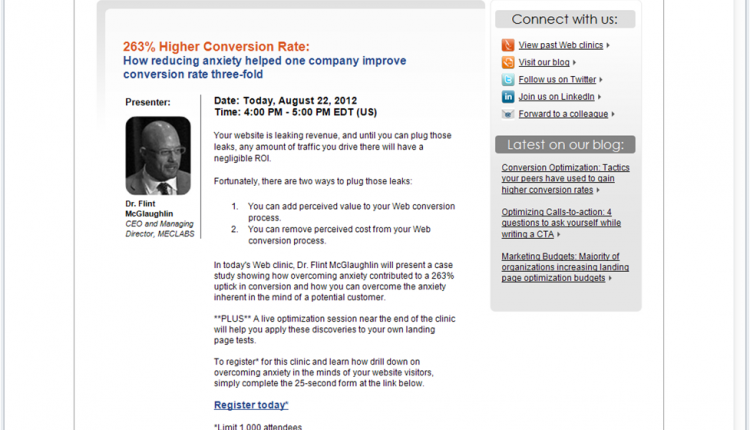I heard this little rumor that there are countries other than the good ol’ US of A. As an American, I found this a little hard to believe, so we did some testing.
In all seriousness, I want to share a test we recently ran, along with what we learned that might help your email and webinar efforts (skip to the end for lessons learned).
It all started with some feedback we recently received …
Dear friends,
A little help from an European friend:
I have joined your webinar.
If you like more customers outside US, you should know that we have 2 difficulties by signing up: Your 12 hour system – but that’s pretty easy – and your time zone EDT. I can find a time zone converter on the Internet, but why should I?
Use EDT for your US customers and GMT or UTC for the rest of the world. This way you may get a market several hundred percent larger. This is a common error by US companies, just like not putting the country code in front of phone numbers. The world is outside [the] US 😉
Best regards,
Bjarne R.
We wanted to see if we could add the international time without increasing friction for our American audience. To the split test!
Control
The control was a traditional MarketingExperiments Web clinic invite …

Treatment
Fortunately, I had an international expert on my team to create the treatment. John Tackett, Editorial Analyst, MECLABS, has lived in countries that use UTC (and also confirmed that non-American countries do, in fact, exist).
So, he did the math and added one simple line to the treatment: the international time for when the Web clinic will be held …

Results
When Selena Blue, Copy Editor, MECLABS, sent me the results, we saw that the treatment did, in fact, provide a lift.
“The use of UTC saw a 2.7% increase in unique clickthrough at a 95% significance level,” Selena said. “For total clickthrough, the treatment saw a 45% increase over the control, at a 95% significance level.”
Lessons Learned
First, it’s always hard to draw red line facts from just one simple email test. At the same time, a simple email test, combined with your greater body of customer intelligence, can add to your customer theory and help you learn more about your customers.
These test results give us an opportunity to talk about a few important basics:
- Listen to your customers – We’re very blessed at MarketingExperiments to have an extremely intelligent group of marketers as our audience. We often solicit and consider their feedback. When you listen to your customers, they’ll help you improve your products and the way you market them.
- Think internationally – I’ve been a little tongue in cheek in this blog post about, what can be, an American-centric view of the world by some marketers. The great thing about digital marketing is that you may have an international audience without even trying. Don’t overlook their needs.
In our case, while our international audience is not accidental, most of us are American and, therefore, tend to be focused on America and don’t think often enough of cultural differences.
To see how important international communications are for your company, you can gauge where your customers live by looking at transactional data. If that’s not possible, look at your analytics program. If you don’t have one installed, you could even use LinkedIn, Facebook or YouTube analytics (screenshot of MarketingExperiments YouTube channel below).

Of course, if your marketing systems and processes are sophisticated enough, you can specifically target certain international segments that you identify. However, since this blog post focuses on a very simple change, I simply wanted to bring up the fact that you can incorporate foreign cultures in some very simple ways (such as by adding a UTC time zone or country code to phone numbers).
- Don’t overlook small returns – You always have to consider the cost when evaluating a return. In our case, a 2.7% lift in unique clickthrough rate is certainly among the smaller lifts we’ve ever discussed on the MarketingExperiments blog. At the same time, the cost to make the change was so minimal that it is certainly worth the effort going forward.
- Test to mitigate risk – While 2.7% is a small increase, a negative result would have been even worse. Every time you make your email message more complex, you risk hurting results. For this test, our goal was to help our international audience, but we also wanted to ensure it didn’t hurt our American audience.
When you have a good reason for making a change, you should consider testing. Not necessarily to search for a lift, but rather to make sure the change you are seeking to make doesn’t negatively impact your current conversion rate.
Related Resources:
Sign up for MarketingExperiments Web clinic invites
Email Marketing: 10 test ideas for optimizing webinar invites
C’est un Blog: Why appealing to an international audience is no joke
Global Email Marketing: 3-part campaign sent in six languages averages 28% CTR




Would a better test for the treatment’s success be the change made in overseas responders to your emails, rather than the change overall.
That’s a great question Steve. Here was our thinking…
While we wanted the change to increase our international audience, we also didn’t want it to decrease our American audience.
While this seems like a relatively minor change, any added complexity (especially to something as crucial to a live event as the time of it) can hurt conversion. Think about it, in the few seconds someone quickly scans an email, they instantly want to get understand if there is value in attending, as well as the basic facts of attending.
That is why we focused on the overall response, not just the international response.
Thanks for reading the MarketingExperiments blog,
Daniel